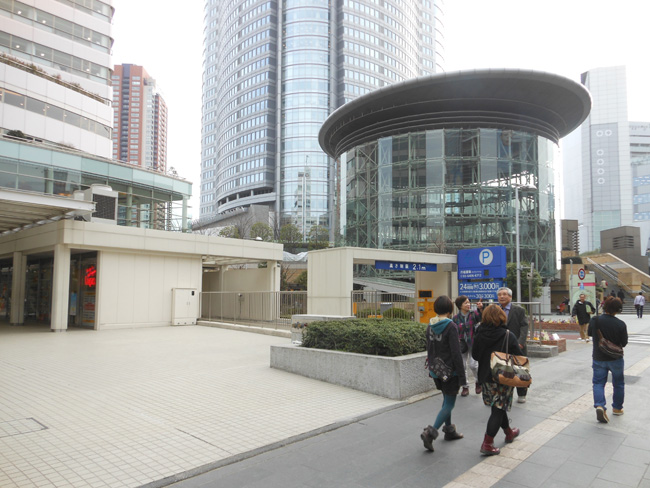![[Mini Theater Revisited] No. 4 New Wave from Roppongi...Part 1 Cine Vivant Roppongi Part 1](https://cinemore.jp/images/6159ddbb357a0e0a4f63b387fa47f216d6875b0382dc0975e21cfae5086f5061.jpg)
[Mini Theater Revisited] No. 4 New Wave from Roppongi...Part 1 Cine Vivant Roppongi Part 1
The artwork for the unique work “Koyaniskatti” is by Eiko Ishioka.
One unique work is the documentary " Koyaanisqati " (1982, directed by Godfrey Regio, distributed by Herald Ace), which was produced by Hollywood great Francis Ford Coppola. It was released in January 1984, and was his second theatrical release, following " The Passion ."
Images of American big city buildings and nature such as Monument Valley were layered with the grand music of contemporary music genius Philip Glass, allowing the audience to surrender themselves to a mysterious experience of sound and images. This was also a work that fit the concept of WAVE (the theater was also equipped with the latest sound equipment).
The artwork for the poster for "Koyaanisqati" was done by Eiko Ishioka, who is also known for her work on the Parco advertisements. She also worked on the Japanese version of the poster for Coppola's " Apocalypse Now " (1979), and it seems that she got to know Director Regio through Coppola and worked hard to get "Koyaanisqati" released in Japan.
During the program at that time, he said, "I intuitively felt that I wanted the people of Japan, especially young people, to see this film. In Japan, visual language and visual communication do not have enough power...Unconventional films are categorized as experimental or avant-garde films and are only shown in a minor capacity. I felt that I wanted to throw this film into that Japanese situation...I approached Japan Herald Films, and as a result, we were able to get the film screened at Cine Vivant."
The theater's approach of screening films that were difficult to get into the commercial market was similar to that of Cinema Square Tokyu, which opened in 1981, but in keeping with the image of the WAVE building, it focused on films with outstanding sound and visuals. This was one of Cine Vivant Roppongi's distinctive features.
For music fans, the record shop Disc Port, which occupies the first to fourth floors, also seemed appealing. Perhaps because the building has no windows and you can't see outside, it's strangely concentrating, and once you're inside, it's hard to leave. They have a really good selection of imported records, including rare albums that you won't find in other record shops in Tokyo (even the record bags are gray with a black logo, matching the monochrome color of the building).
The store's selection was apparently well-known among people in the music industry, and I have often heard stories of famous musicians and music-savvy writers being seen buying records there.
I also bought a variety of records, one of which was an album by Mose Allison , a white American blues singer. His song " Everybody Cry Marcy " was sung by another musician I like ( Bonnie Raitt ), and I wanted the original version, so I searched for his album for a long time, and finally found it at the WAVE record store.
That album has been one of my favorites for many years, and in 2012 I had the opportunity to hear Mose sing live at the Blue Note in Tokyo on his miraculous first visit to Japan at the age of 84.
Perhaps WAVE's old advertising copy, "A quiet dock where city people can create their own wavelength," was not a lie.
In a time before the Internet, it was a place that promised an encounter with a new culture.

◉ It has undergone such a transformation that it is hard to imagine its former self just by looking at it. Standing in front of it is the 54-story Roppongi Hills Mori Tower (photographed in 2012).
Previous article: [Revisiting Mini Theaters] Part 3 1981...Part 3
Next time: [Revisiting Mini-Theaters] No. 5: New Wave from Roppongi...Part 2 Cine Vivant Roppongi, Part 2
Text: Sawako Omori
Movie journalist. His books include "Lost Cinema" (Kawade Shobo Shinsha) and other books, and his translations include "Woody", a biography of Woody Allen (written by D. Evanier, Kinema Junposha). Contributes to magazines such as ``Music Magazine'' and ``Kinema Junpo.'' A research book based on the web series, ``Mini Theater Revisited,'' is also scheduled to be published.
*This article was serialized on a website run by Geijutsu Shimbun between 2013 and 2014. This time, we have received permission from Sawako Omori and Geijutsu Shinbunsha Co., Ltd. to reprint this work. In addition, ``Mini Theater Revisited'' has been significantly revised, new interviews have been added, and it is scheduled to be published as a book by Artes Publishing in 2021.

